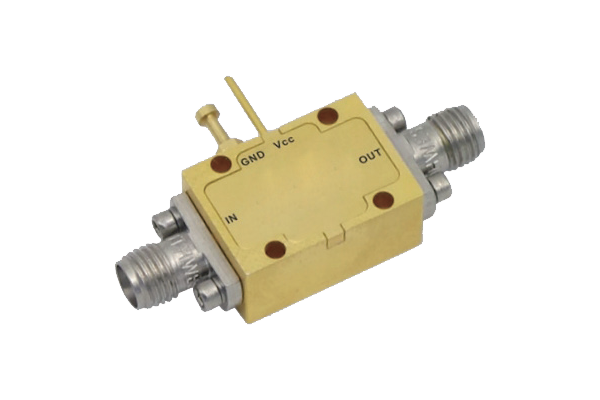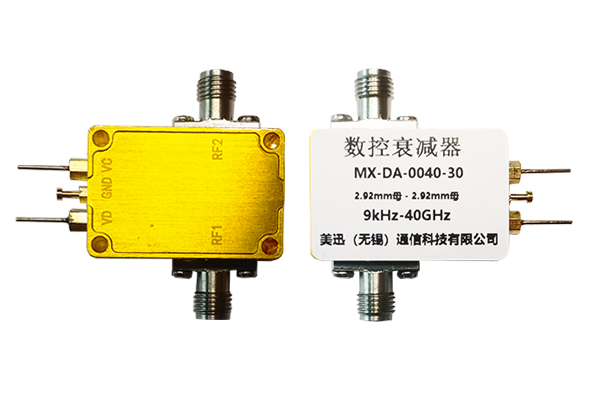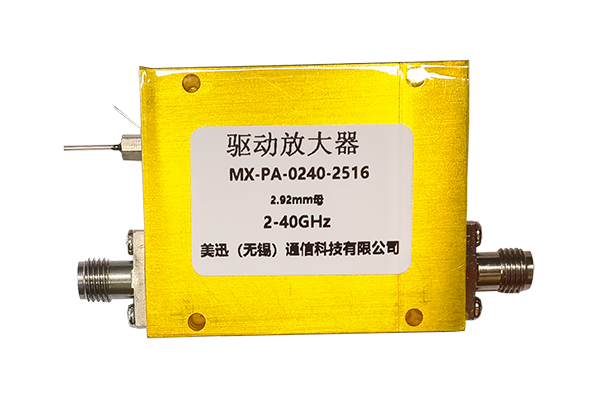
Pin diode devices are now regarded as essential parts in high-frequency circuitry given their inherent performance characteristics Their capability to switch quickly between conductive and non-conductive states combined with low capacitance and insertion loss makes them suitable for switches modulators and attenuators. The core switching mechanism for PIN diodes is based on bias-driven control of current across the junction. The control voltage varies the depletion region dimensions at the junction and thereby alters conductive behavior. Adjusting the bias enables PIN diodes to be switched for high-frequency operation while minimizing distortion
For applications demanding exact timing and control PIN diodes are typically incorporated into complex circuitry They are effective in RF filter designs to allow selective passage or rejection of designated frequency ranges. Their competency in managing strong signals qualifies them for amplifier power splitter and signal source applications. Miniaturized high-efficiency PIN diodes now find more applications in wireless and radar technologies
Coaxial Switch Architecture and Performance Review
Developing coaxial switches is complicated and depends on careful analysis of key parameters Performance depends on which switch style is used the operational frequency and insertion loss performance. Minimizing insertion loss and enhancing isolation are primary goals for coaxial switch engineering
Examining performance entails assessing return loss insertion loss and isolation figures. Evaluation is achieved through simulation studies analytical models and hands on experiments. Reliable operation of coaxial switches demands thorough and accurate performance analysis
- Simulation, analytical modeling and experimental testing are widely utilized to examine coaxial switch designs
- Environmental temperature impedance mismatches and production tolerances can significantly influence switch characteristics
- Novel developments and recent trends in coaxial switch design pursue performance gains alongside miniaturization and power savings
Low Noise Amplifier LNA Design Optimization
Maximizing LNA performance efficiency and gain is necessary to secure exceptional signal quality in applications It requires selecting suitable transistors setting optimal bias conditions and choosing the right topology. A resilient LNA architecture aims to lower noise generation and raise gain while keeping distortion low. Simulation based analysis is critical to understand design impacts on LNA noise performance. Targeting a small Noise Figure quantifies how well the amplifier keeps the signal intact against intrinsic noise
- Selecting low-noise active devices is central to achieving low overall noise
- Correctly applied bias conditions that are optimal and suitable are vital for low noise
- Circuit topology significantly influences overall noise performance
Employing matching networks noise suppression and feedback systems refines LNA performance
Pin Diode Switch Based Signal Routing

Pin diode switch implementations yield flexible efficient routing of RF signals in diverse applications They can be switched very fast to allow flexible dynamic routing of RF signals. A major advantage of PIN diodes is low insertion loss and high isolation which reduces signal degradation. Typical applications include antenna switching duplexing and RF phased arrays
A PIN diode switch’s operation depends on modulating its electrical resistance with a control voltage. When off the diode’s high resistance isolates and blocks the RF path. Introducing a positive control voltage reduces resistance and opens the RF path
- Additionally moreover furthermore PIN diode switches offer rapid switching low power consumption and compact size
Various architectures configurations and designs of PIN diode switching networks enable complex routing operations. Linking multiple PIN switches produces dynamic matrices that allow adaptable signal path configurations
Evaluation of Coaxial Microwave Switch Performance

Testing and assessment of coaxial microwave switches are crucial to ensure efficient operation within systems. Numerous various and diverse factors influence switch performance such as insertion reflection transmission loss isolation switching speed and bandwidth. An exhaustive evaluation procedure measures these parameters across varied operating environmental and test conditions
- Further the testing should consider reliability robustness durability and capability to withstand harsh environmental factors
- Ultimately the conclusions of a detailed evaluation deliver important valuable critical intelligence for choosing designing and refining switches for specific tasks
LNA Noise Minimization Techniques A Detailed Review
LNAs serve essential roles in wireless RF systems by amplifying weak signals and curbing noise. The review provides a comprehensive examination analysis and overview of noise reduction techniques for LNAs. We investigate explore and discuss critical noise mechanisms like thermal shot and flicker noise. We additionally survey noise matching feedback circuit methods and optimal biasing approaches to reduce noise. The article highlights recent advances such as novel semiconductor materials and innovative circuit architectures that reduce noise figure. By elucidating noise reduction principles and applied practices the article aims to be a valuable resource for engineers and researchers building high performance RF systems
High Speed Switching Roles of PIN Diodes

They exhibit unique remarkable and exceptional features that render them ideal for high speed switching Low parasitic capacitance and small resistance enable quick switching to handle precise timing requirements. Further PIN diodes’ proportional response to voltage facilitates exact amplitude modulation and switching control. Their adaptability flexibility and versatility qualifies them as suitable applicable and appropriate for broad high speed uses They are applied in optical communications microwave systems and signal processing equipment and devices
Coaxial Switch IC Integration and Circuit Switching
Integrated circuit coaxial switching technology brings enhanced capabilities for signal routing processing and handling within electronics systems circuits and devices. The ICs are designed to direct manage and control coaxial signal flow offering high frequency operation and reduced propagation insertion latency. IC driven miniaturization allows compact efficient reliable and robust designs tailored to dense interfacing integration and connectivity requirements
- By meticulously carefully and rigorously applying these methods developers can produce LNAs with superior noise performance enabling sensitive reliable electronics By meticulously carefully and rigorously adopting these practices designers can deliver LNAs coaxial switch with excellent noise performance supporting reliable sensitive systems With careful meticulous and rigorous deployment of these approaches developers can accomplish LNAs with outstanding noise performance enabling trustworthy sensitive electronics With careful meticulous and rigorous deployment of these approaches developers can accomplish LNAs with outstanding noise performance enabling trustworthy sensitive electronics
- Applications range across telecommunications data communications and wireless networking
- Aerospace defense and industrial automation benefit from integrated coaxial switch solutions
- Consumer electronics audio visual equipment and test and measurement systems are typical domains
Design Tips for Low Noise Amplifiers in mmWave Bands

Design of LNAs at millimeter wave frequencies requires mitigation of higher signal loss and noise influence. Parasitic capacitances and inductances become major factors at mmWave demanding careful layout and parts selection. Keeping input mismatch low and power gain high is critical essential and important in mmWave LNA designs. Choice of active devices such as HEMTs GaAs MESFETs or InP HBTs is crucial to reach low noise figures at mmWave. Additionally the careful design and optimization of matching networks is essential to ensure efficient power transfer and good impedance match. Package parasitics must be managed carefully as they can degrade mmWave LNA behavior. The use of low-loss lines and careful ground plane planning is essential necessary and important to limit reflections and sustain bandwidth
PIN Diode RF Switching Characterization and Modeling
PIN diodes operate as essential components elements and parts in diverse RF switching applications. Accurate precise and detailed characterization of these devices is essential for designing developing and optimizing reliable high performance circuits. Included are analyses evaluations and examinations of electrical voltage and current characteristics such as resistance impedance and conductance. Their frequency response bandwidth tuning capabilities and switching speed latency or response time are likewise measured
Moreover additionally furthermore creating accurate models simulations and representations for PIN diodes is crucial essential and vital to forecast behavior in RF systems. Different modeling methods like lumped element distributed element and SPICE models exist. Choosing the proper model relies on the specific application requirements and the desired required expected accuracy
Advanced Strategies for Quiet Low Noise Amplifier Design
Creating LNAs requires meticulous focus on circuit topology and component choices to secure optimal noise outcomes. New and emerging semiconductor advances have led to innovative groundbreaking sophisticated design techniques that lower noise substantially.
Among the techniques are utilizing implementing and employing wideband matching networks integrating low noise high intrinsic gain transistors and refining biasing schemes strategies and approaches. Additionally furthermore moreover advanced packaging and thermal management techniques are important to lower external noise sources. Through careful meticulous and rigorous application of such methods engineers can design LNAs with top tier noise performance enabling dependable sensitive systems
